In the future, sea vegetables may save us.
It is a truth universally acknowledged that the world cannot sustain a future where food is consumed like it is today. According to a 2010 United Nations report, agriculture for meat and dairy production accounts for 70% of global freshwater consumption, 38% of total land use, and 19% of the world’s greenhouse gas emissions1. By 2050, it is predicted that 2.5 billion more people will be alive2 and we will have to almost double our food production to cope with the extra mouths to feed. With climate change making farming more challenging, little more virgin land available, overfished oceans and water shortages, our future mealtimes must be reimagined with more sustainable food options. The sea, and specifically, its plants, may be our long-term solution for feeding future generations.
The need to feed requires humans to rethink the way we use land and water to grow and harvest food, and the sea is a potential source of food and fuel for the future. In particular, seaweed is one of the world’s most nutritious and sustainable crops. Algae are single-cell organisms that grow very rapidly at sea and in places where other food crops usually don’t survive. Seaweed is also incredibly resilient and low maintenance; it is a zero-input food, meaning it does not require fresh water, fertilizer, feed or arid land to grow. It readily absorbs dissolved nitrogen, phosphorus and carbon dioxide directly from the sea and reproduces at a phenomenal rate—it can grow as much as three-quarters of an inch a day.
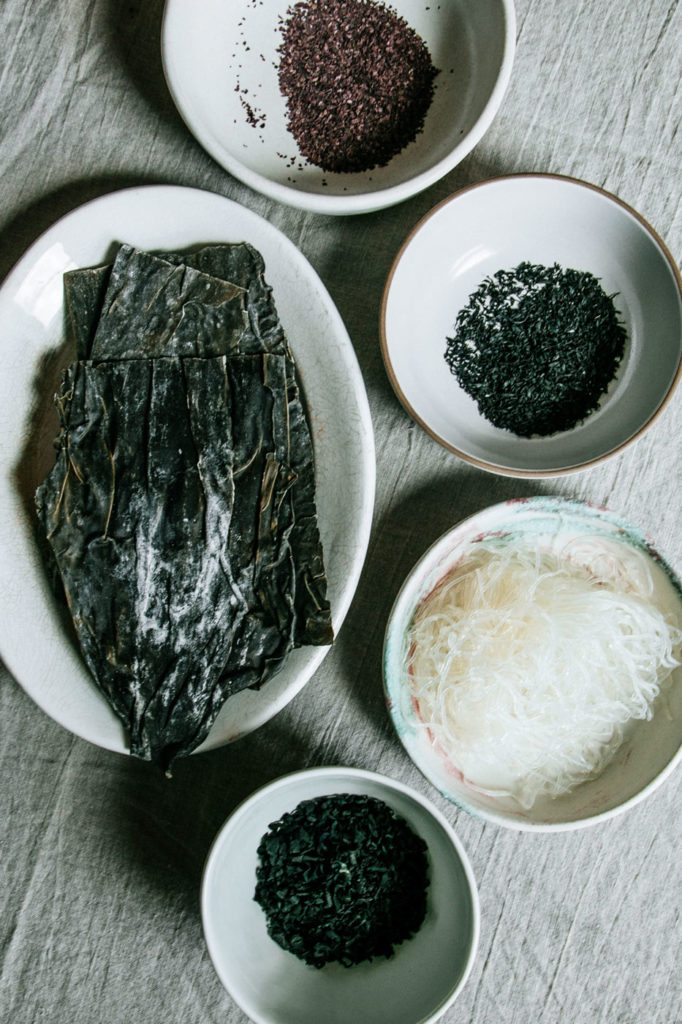
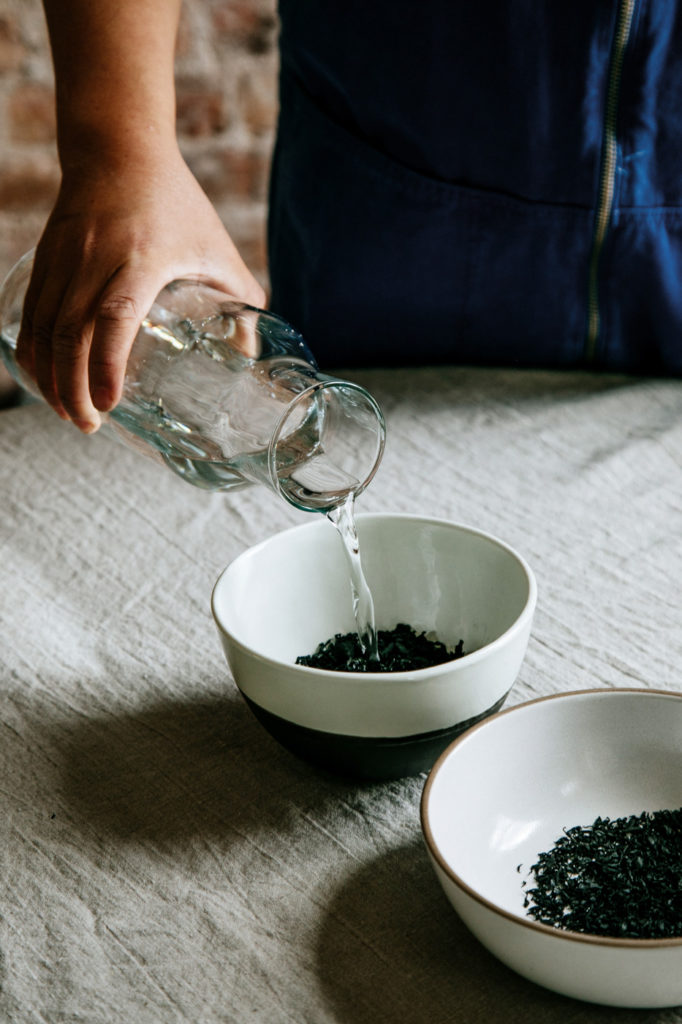
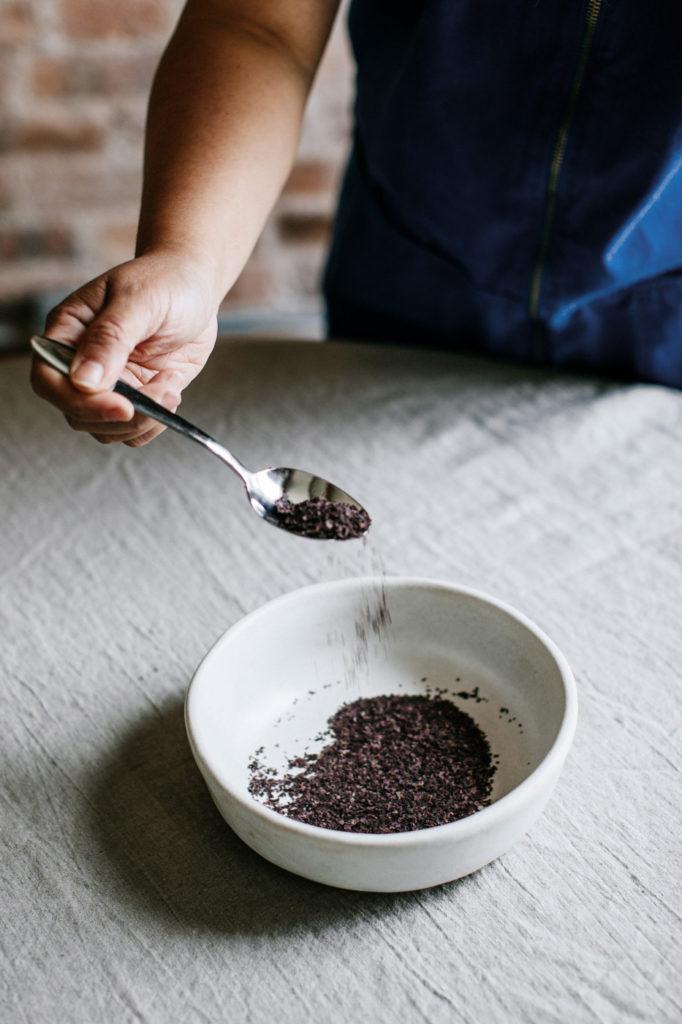
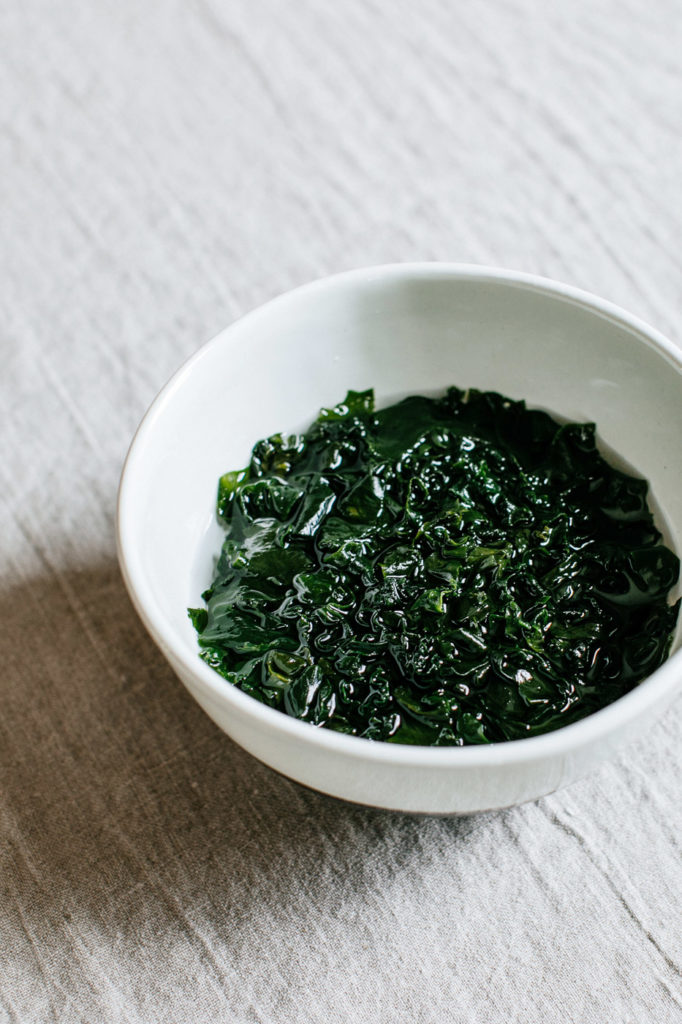
Nutritionally, seaweed packs a punch; it has more calcium than milk, more vitamin C than orange juice, and more protein than soybeans. In fact, fish do not naturally produce omega-3 fatty acids; they obtain these nutrients by eating seaweed.
It seems everything about seaweed as a future superfood makes perfect sense. But the biggest challenge is not in its production, but rather it in its culinary reputation. Aside from popularity in Japanese and Chinese dishes, seaweed is still to find its feet in mainstream cuisine. Many diners struggle with its slimy texture and briny flavor; others are so familiar with it as the unwieldy weed washed up along the beach, that they fail to consider it as food. So how do we take seaweed consumption beyond nori and sushi and into the center of the plate?
Ultimately, if seaweed is to catch on as a viable sustainable food choice for the future, we must find a way to use it in everyday cooking. Bren Smith, the owner of Thimble Island Ocean Farm, and one of the world’s leading lights in seaweed farming, is working with chefs to provide ocean plants that can be incorporated into creative dishes—think green sea butters with cheese and kelp-based umami-filled bouillons. And then there was the time a few years ago when Smith collaborated with Brooks Headley at New York’s Superiority Burger to supply them with kelp noodles for a side dish. Superiority Burger’s dish of kelp noodles and roasted carrots in barbecue sauce served with bread crumbs was not only inventive, but a complete sellout success. Seaweed, perhaps an acquired taste and texture for many, would surely benefit from a few more starring roles like this on mainstream menus in order to make its mark on the culinary world.
At home, our dishes need not be as elaborate. Try adding sea greens to your morning porridge for a savory take on a breakfast classic. Add a few wakame shards to your next brown rice bowl, or make kelp the star of your noodle salad. Seaweed as an everyday vegetable is not as challenging as you think.
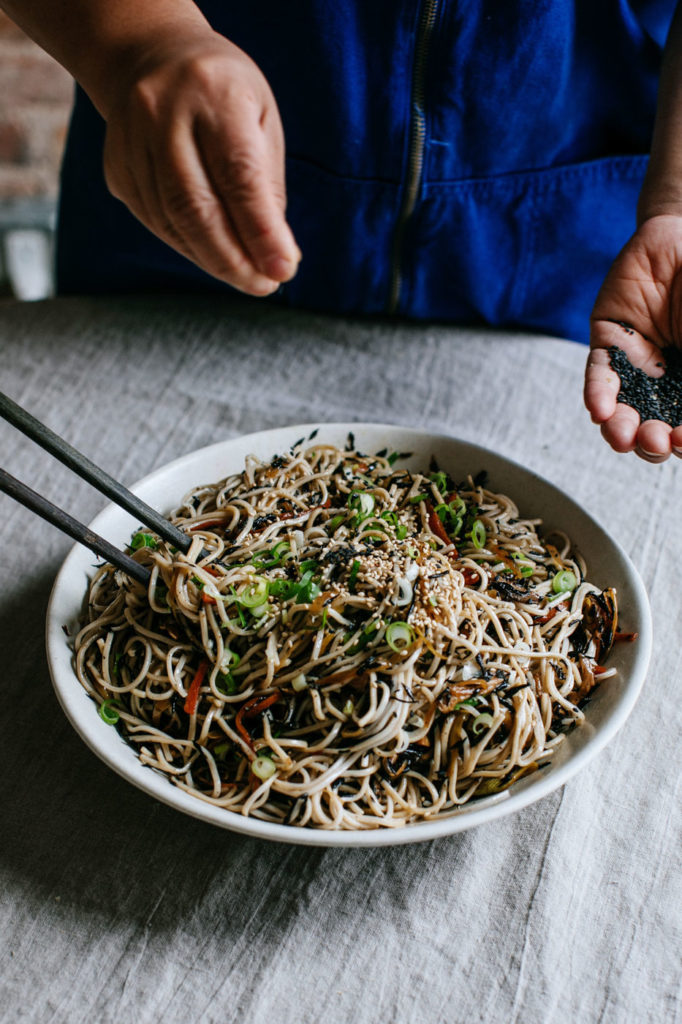
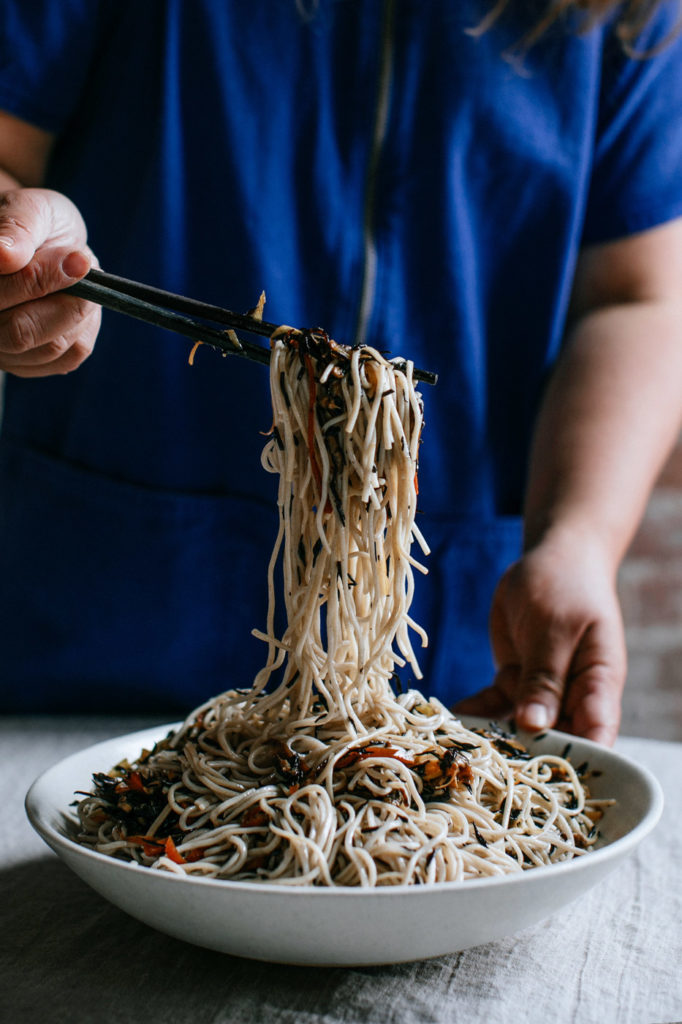
In cooking, seaweed imparts a distinct, savory flavor that inspired the fifth taste—umami (which derives from the Japanese word for “deliciousness”). There are many tasty varieties of edible seaweed readily found in Asian supermarkets and health food stores; they are usually sold dried and must be rehydrated before use. These sea plants, in particular, can be easily incorporated into daily cooking.
Dulse has a mild sea flavor, with a lovely salty hit. You can add this to soups, stews, dressings, salads, or to make a flavored butter. Dulse butter is perfect on a piece of bread, or melted over hot roasted vegetables.
Kombu is a versatile addition to broths and salads, imparting a mildly salty-yet-sweet flavor. Add a strip to your bean cooking liquid to make your legumes more digestible as kombu is known to aid digestion.
Wakame is your seaweed all-rounder and one of the best for salads. Its deep blue-ish black leaves are full of protein, magnesium, chlorophyll, iron, calcium and zinc.
Arame is an antioxidant-rich kelp, with dark brown strands and a mild, slightly sweet flavor and firm texture. It is an excellent source of protein, supports the thyroid, and strengthens bones. Arame is also great in salads, and is very nice sautéed with carrots or shiitake mushrooms.
Hijiki is a twig-like sea plant that grows along the coastlines of Japan, China and Korea. It is incredibly nutrient rich—it aids the digestive system, boosts energy, strengthens bones, prevents diabetes, lowers cholesterol, and improves metabolic efficiency.
Kelp noodles are a great substitute for pasta or traditional noodles. They are usually sold ready to eat right out of the bag.
As feeding the world’s burgeoning population becomes a challenge for later generations, it seems we have barely touched upon the potential of the sea as a thriving food source. Will kelp be the new kale? I guess the future will tell.
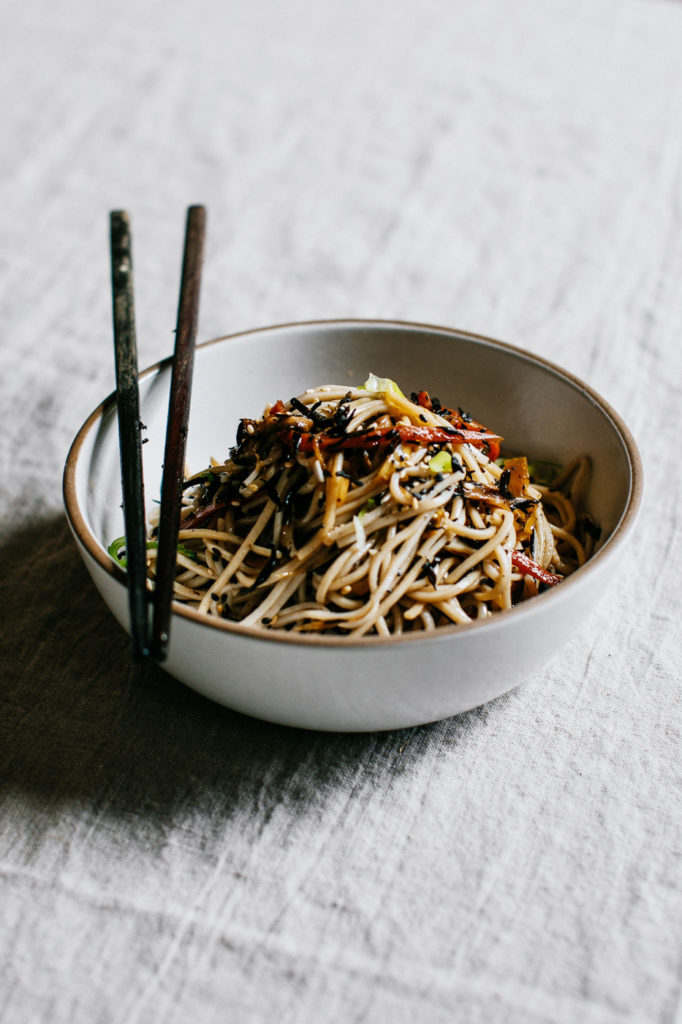
RECIPE
Hijiki Salad with Chilled Soba Noodles
Hijiki is very efficient in soaking up punchy flavors. This mixture (before adding the noodles) is wonderful eaten with brown rice, or can be used to make onigiri. Make a large portion and keep it in a sealed container in your fridge (for up to one week). Here, I’ve added some chilled soba noodles for a complete meal.
Serves 4
Ingredients
- 30 grams dried hijiki seaweed
- 270 grams soba noodles
- 1 large carrot, peeled
- 1 leek (white part only) or 4 scallions
- 200 grams shiitake mushroom
- ½ inch piece of ginger
- 1 tbsp sunflower oil
- 3 tbsp soy sauce or tamari
- 2 tbsp mirin
- 2 tbsp rice vinegar
- 1 tsp sugar
- 2 tsp sesame oil
- 3 scallions, finely sliced
- Sea salt
- Shite pepper
- 2 tbsp sesame seeds (white, black or both), toasted
Directions
Soak the hijiki in a large bowl of water for 30 minutes.
Bring a large pot of salted water to the boil and add the soba noodles. Cook, stirring with wooden chopsticks every now and then to separate the noodles, for about 5 to 7 minutes, until the noodles are cooked al dente. Drain immediately and refresh under cold running water. When completely cold, place the noodles in the fridge to chill. The soba noodles can be made a day ahead and kept in the fridge until ready to use.
Drain and rinse the hijiki seaweed very well under running water. Allow to drain again and pat dry with a paper towel.
While the hijiki is soaking, cut the carrot into thin matchsticks. Slice the leek and shiitake mushrooms finely. Finely slice the ginger into razor thin matchsticks.
In a skillet over medium heat, add the sunflower oil. When the oil is hot, add the carrot, hijiki and ginger and stir fry on medium heat until the carrots are half cooked, about 3 to 4 minutes. Throw the shiitake mushrooms and leek into the pan, and toss everything together. Add the soy sauce, mirin, rice vinegar and sugar, turn down the heat to low and simmer for another 2 to 3 minutes. Once cooked, add the sesame oil and mix well. Remove from the heat.
Combine the chilled soba noodles with half the hijiki and the scallions, and toss everything together. Season with a big pinch of sea salt and a small pinch of white pepper. To serve, add another spoonful or two of hijiki on top of the noodles and scatter with sesame seeds.
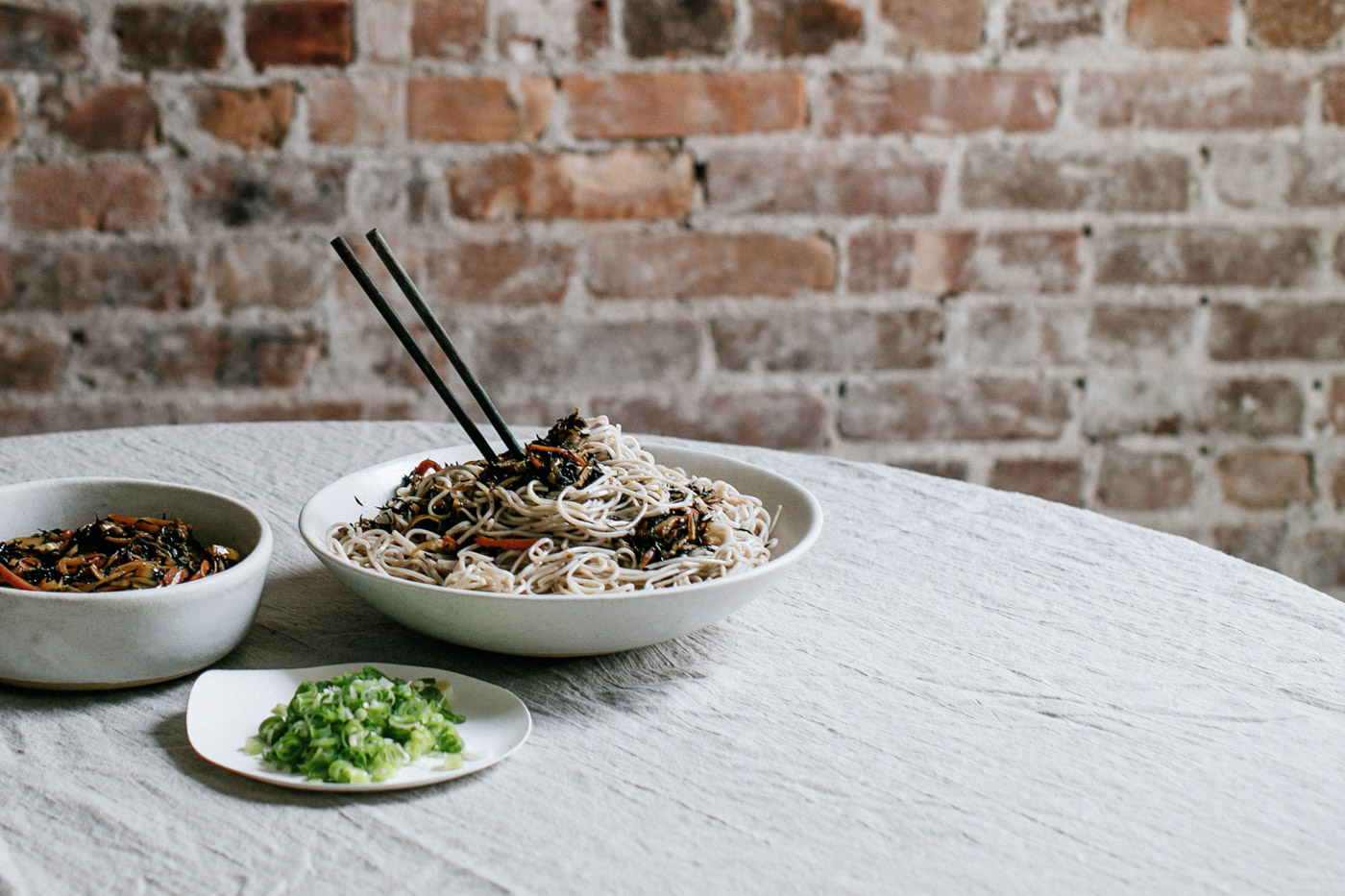
—
Sources
1 UN urges global move to meat and dairy-free diet via The Guardian
2 The 9 billion-people question via The Economist





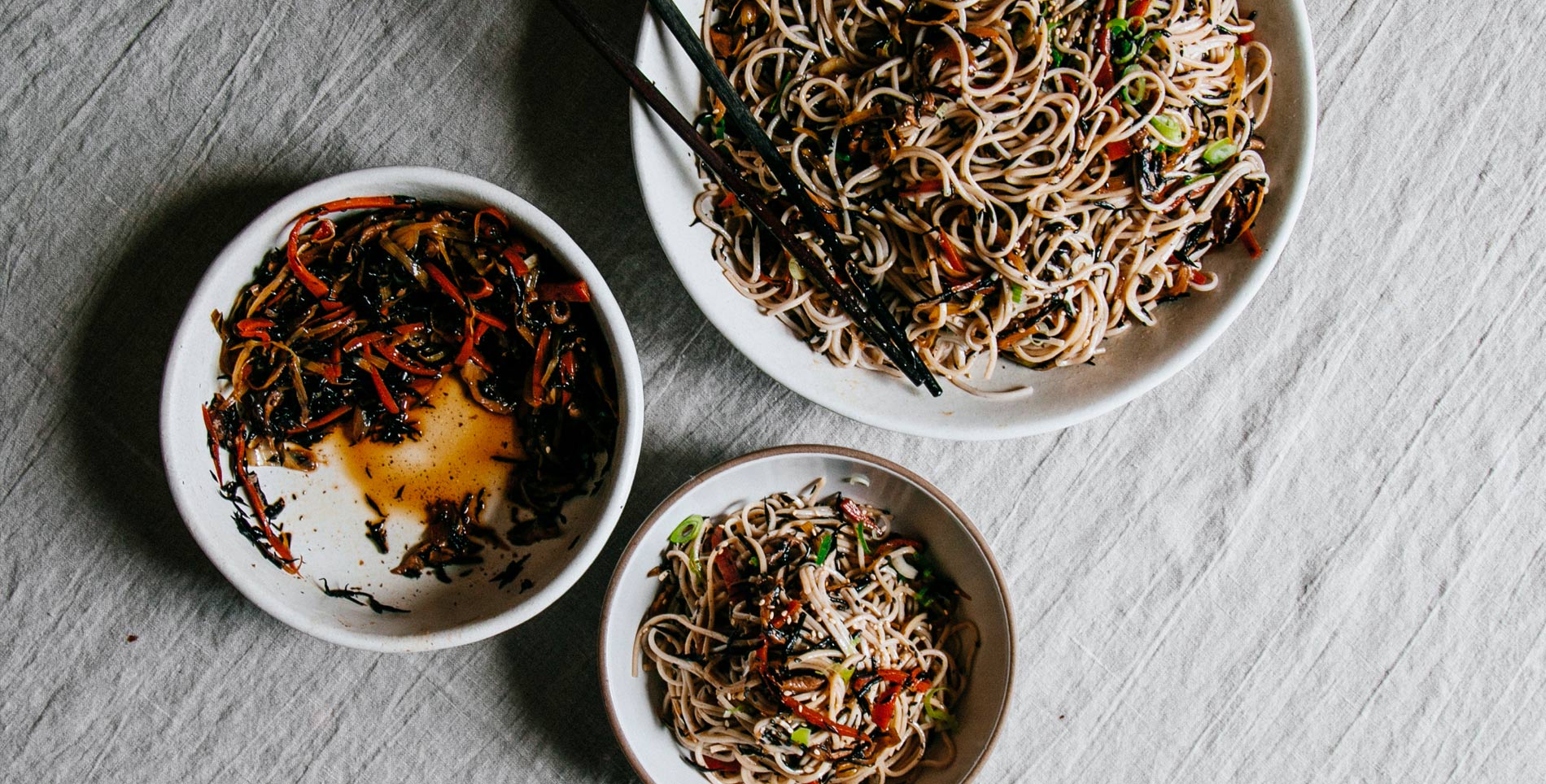

Our comments section is for members only.
Join today to gain exclusive access.